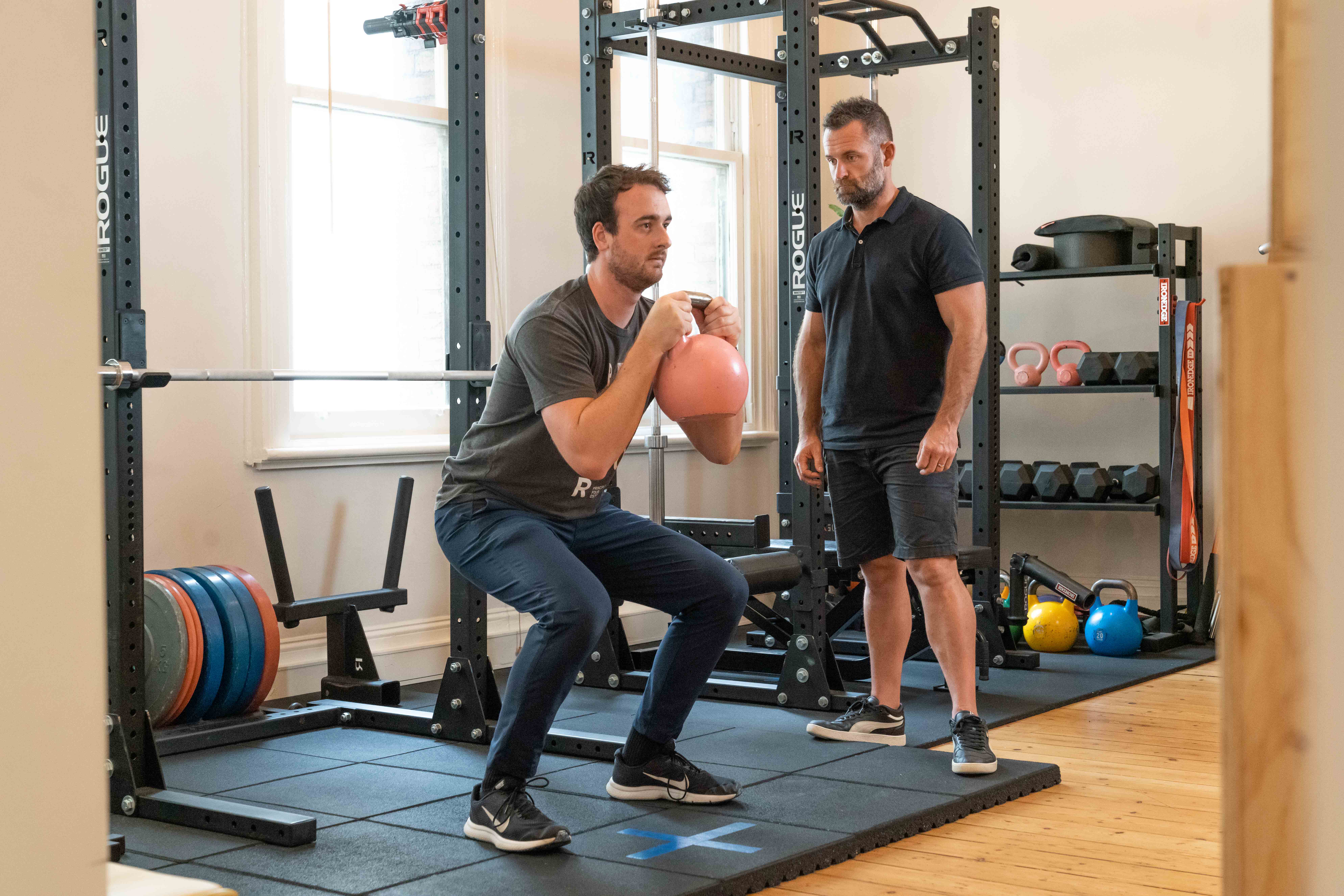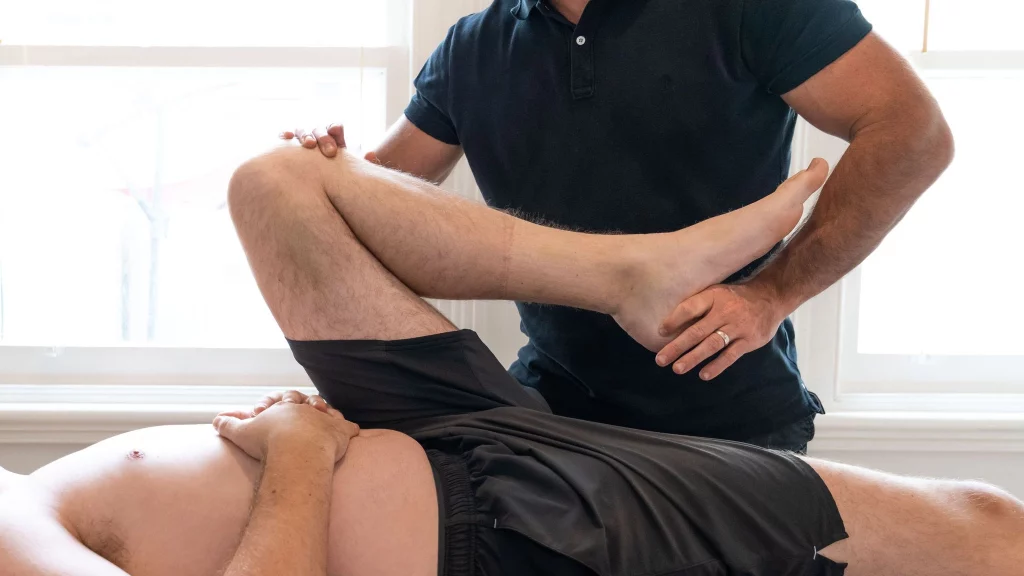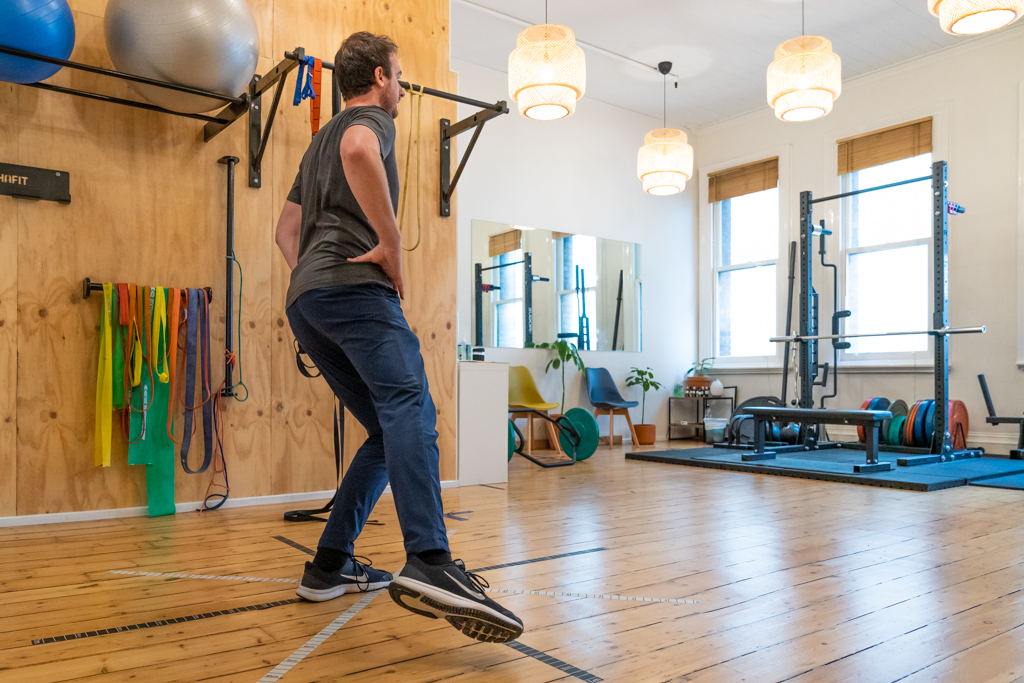Can Osteopathy Help With Patellofemoral Pain Syndrome (PFPS)?
Table of Contents
- Introduction
- What Is Patellofemoral Pain Syndrome? 2.1 Common Signs and Symptoms 2.2 Causes and Contributing Factors
- How Osteopathy Can Help 3.1 Manual Therapy for Pain and Mobility 3.2 Exercise Rehabilitation to Address Biomechanics 3.3 Strength & Conditioning for Long-Term Knee Health
- What Does the Research Show?
- A Comprehensive, Individualised Care Model
- Why Choose Principle Four Osteopathy in Melbourne CBD?
- FAQs About PFPS and Osteopathy 7.1 What activities make PFPS worse? 7.2 Can osteopathy treat chronic PFPS? 7.3 How long does PFPS take to resolve? 7.4 Do I need a referral or scan?
- Author
Introduction
Patellofemoral Pain Syndrome (PFPS), sometimes called “runner’s knee,” is a frequent source of knee pain affecting active individuals and sedentary populations alike. It is characterised by discomfort around or behind the kneecap, particularly during squatting, running, or using stairs.
At Principle Four Osteopathy, located in Melbourne’s CBD, we specialise in diagnosing and treating PFPS using a holistic approach that combines manual therapy, exercise rehabilitation, strength training, and ergonomic guidance to help you move pain-free.
What Is Patellofemoral Pain Syndrome?
PFPS is caused by irritation of the tissues around the patella (kneecap), usually due to abnormal tracking or stress on the joint. It’s not related to structural damage but rather to mechanical and muscular dysfunction that leads to pain.
2.1 Common Signs and Symptoms
- Pain around or behind the kneecap
- Pain during activities like stairs, squatting, or prolonged sitting
- Clicking or grinding sensation with knee movement
- Swelling is typically absent or minimal
2.2 Causes and Contributing Factors
- Poor hip or gluteal strength
- Overuse from high-impact activities
- Abnormal patellar tracking due to muscular imbalance
- Foot and ankle mechanics (e.g. excessive pronation)
- Sudden changes in training load or surface
How Osteopathy Can Help
3.1 Manual Therapy for Pain and Mobility
Our osteopaths use hands-on techniques to:
- Release tight quadriceps, ITB and hamstrings
- Mobilise the knee, hip, and ankle joints
- Address compensatory tension in the lower back or pelvis
- Apply myofascial techniques to improve movement quality
These approaches reduce pain and improve joint mechanics in preparation for active rehab.
3.2 Exercise Rehabilitation to Address Biomechanics
A targeted exercise plan is essential to recover from PFPS. At Principle Four, we focus on:
- Strengthening glutes, hips and quads (especially vastus medialis oblique – VMO)
- Improving control during squats, lunges, and stairs
- Enhancing ankle mobility and foot stability
- Gradual reintroduction to sport or daily activities
3.3 Strength & Conditioning for Long-Term Knee Health
We incorporate strength training principles into rehab to:
- Build tolerance to load and reduce recurrence
- Improve full lower limb mechanics
- Support return to sport, fitness, or work goals
We also provide ergonomic and workplace support if PFPS is aggravated by occupational factors.
What Does the Research Show?
Evidence supports conservative treatment as the gold standard for PFPS. Exercise therapy, especially hip and knee strengthening, is consistently effective.
A 2015 systematic review by van der Heijden et al. highlighted that multimodal physiotherapy—comprising manual therapy, education, and exercise—is effective in managing PFPS.
References:
- van der Heijden, R. A. et al. (2015). Exercise for treating patellofemoral pain syndrome. Cochrane Database of Systematic Reviews.
- Collins, N. J. et al. (2012). Physical therapies for patellofemoral pain syndrome. British Journal of Sports Medicine.
A Comprehensive, Individualised Care Model
We understand that every patient is unique. Our approach includes:
- Biomechanical assessment of the entire lower limb
- Evaluation of posture, gait and foot function
- Personalised exercise programming
- Advice on load management and lifestyle changes
Why Choose Principle Four Osteopathy in Melbourne CBD?
Based at Level 4, 178 Collins Street, our clinic provides:
- Comprehensive osteopathic care for knee pain
- Access to gym-based rehab equipment
- Skilled practitioners in strength and conditioning
- Integration of occupational and ergonomic services
Whether you’re a recreational runner, active worker, or just experiencing discomfort with daily movement—our team can guide your recovery journey.
FAQs About PFPS and Osteopathy
What activities make PFPS worse?
Deep squats, stairs, prolonged sitting, and high-impact exercise can irritate the kneecap. Your osteopath will help guide activity modification.
Can osteopathy treat chronic PFPS?
Yes. Osteopathy addresses underlying biomechanical factors, even in long-standing cases, to reduce pain and prevent flare-ups.
How long does PFPS take to resolve?
With consistent care and adherence to rehab, most individuals see improvement in 4–8 weeks. Chronic cases may take longer but can improve.
Do I need a referral or scan?
No referral is needed. Scans are usually unnecessary unless symptoms are severe or not responding to care.
Author
Heath Williams
Principal Osteopath | Clinical Educator | Strength Coach
Heath leads the team at Principle Four Osteopathy in Melbourne CBD. With a focus on evidence-based rehab and biomechanics, he helps clients overcome knee pain with tailored, active solutions.
Internal Links:
Page URL: www.principle4.com.au/blog/osteopathy-for-patellofemoral-pain



